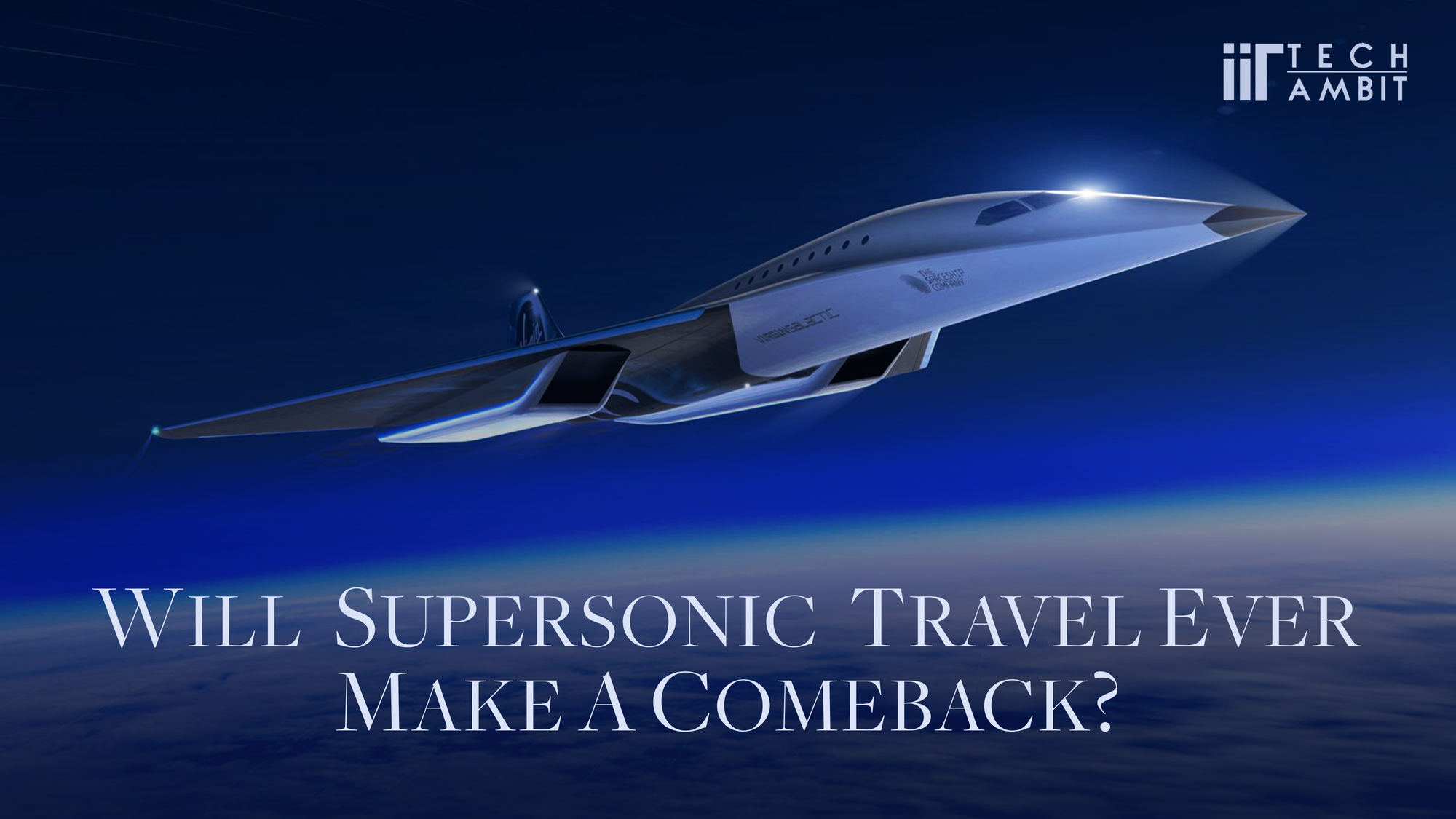July 2000. Air France Flight 4590 crashes during takeoff, in what would be known as one of the biggest catastrophe in aviation history. It was the beginning of the end of the concorde and a big nail in the coffin of supersonic air travel. A punctured tyre, thanks to a debris lying in the runway, resulted in a hole in a fuel tank, thus killing all its passengers. Amidst rising fuel prices, and decreasing confidence in air travel post 9/11 attacks, the Concorde had to eventually retire in 2003.
The Concorde may be a prized showpiece of the past, but its legacy continues. Companies and organisations like Boeing and NASA, along with several start-ups are trying to make passenger supersonic air travel make a comeback.
The Challenges
There are varied challengers which make the path to supersonic travel, (or SST) a tough one. Firstly, the physics involved is considerably different compared to a subsonic aircraft. Supersonic airflows are characterised by shock waves, which are thin regions where flow properties change very sharply and suddenly. Such fast changes bring with it several manufacturing and practical challenges. Shock waves are often attributed to the infamous example of windows shattering in streets in New York, when the concord used to fly. It is also the cause of enormous noise in flight, disturbing the life of those on ground. This forced government regulations to be modified across the globe, banning all types of supersonic flights over land. The sonic boom problem was one of the major reasons why SST never returned after the Concorde’s retirement.
Shock waves also exert significant forces on the aircraft skin. Also, the high speed incoming air results in increased friction and eventually results in very high temperatures on the aircraft’s surface. Hence, the materials required for supersonic aircrafts need to significantly stronger and more heat-resistant compared to the usual materials used in conventional passenger aircrafts like the 737 or the A320.
Even if the engineering community manage to solve these issues, the financial and environmental questions remain. The Concorde was aggressively targeted by environmentalists for flying at enormous heights and harming the ozone layer significantly.
SST take-off initiate?
Despite the monumental challenges that stand against realising SST again, companies and start-ups have made significant success towards making passenger travel supersonic again.
A UK based company, Reaction Engines had announced its brand new SABRE engine, inviting attention from across the aviation community. It could arguably be a major step towards SST. Elon Musk’s BFR might have some competition here. The engine’s main innovation lies in its precooler, which can cool air in less than 20th of a second. The company has successfully tested its SABRE engine and the heat exchanger worked at temperatures same as 3.3 Mach speed (3.3 times the speed of sound.) The company has thus attracted significant attention, reigniting the discussion regarding SST becoming a possibility. Interestingly, Reaction Engines has attracted funding from the British government, the U.S. Defense Advanced Research Projects Agency (DARPA) and the European Space Agency(ESA).
As Richard Varvill, co-founder and CTO of the company, says, “This is a momentous landmark for Reaction Engines in the development of its SABRE engine, which has the potential to revolutionize both access to space and high-speed flight by powering aircraft to five times the speed of sound. The performance of our proprietary precooler technology was validated at hypersonic flight conditions and takes us closer to realizing our objective of developing the first air-breathing engine capable of accelerating from zero to Mach 5.”
Another company, Boom supersonic, is looking towards making supersonic aircrafts a reality by mid 2020s. Its overture jet is reminiscent of the Concorde but with half the capacity and wrapped with modern-day tech. “There are actually no barriers, not technologically, not in the market, not even in regulation,” says Blake Scholl, CEO of Boom supersonic.

NASA and Lockheed Martin have also been reported to work on SST.
With such big names and significant innovation, it seems like SST is but inevitable. Or is it?
The world was recently engrossed in one of the most dramatic and important movements of the decade, led lately by teenager activist, Greta Thunberg, who has been in covers of many a news magazines. The Paris agreement seems to be a dream for many countries and as things stand, a shift to SST would be vehemently opposed by the environmentalist community, especially given the increased awareness lately.
As innovations in this sector keep increasing, tension will rise too, engrossing all of us in one very important debate: “Is supersonic travel really all that important? Or is it just testing the very limits of human engineering capabilities?”


